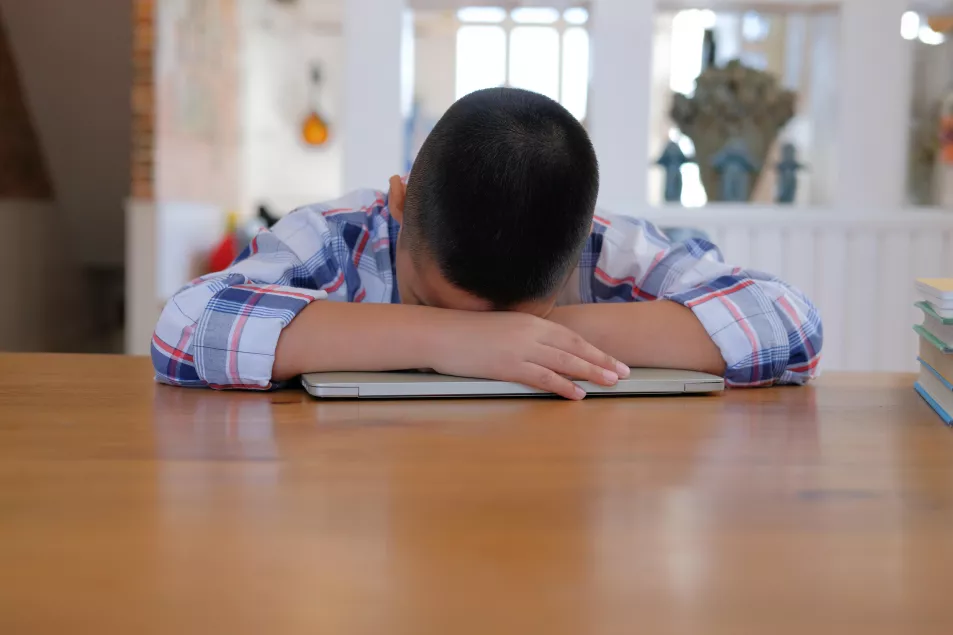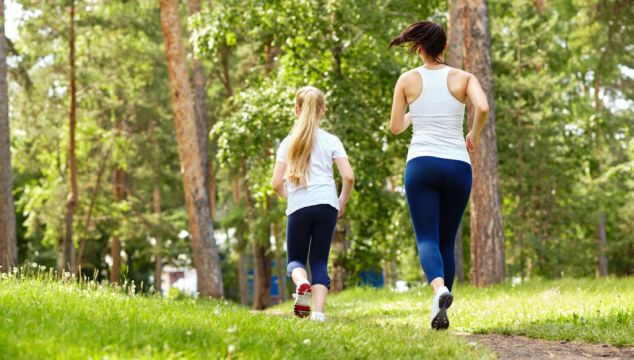Finding the time to move our bodies seems to be getting more difficult.
We understand – more than ever – why it’s so important. We know it helps our brains as much as our bodies, but we’re so overstretched in every area of life, that when you have a free hour at the weekend, prioritising exercise over rest can be hard.
Throw kids into the mix – school runs, parties, clubs, homework, visiting family, lack of motivation – and it feels tougher still. Yet it’s actually those children who really need to move their bodies. Yes, we can talk (if we must) about the rise in overweight and obesity in kids, but more importantly, it’s their delicate post-pandemic brains that really need the power of those post-exercise endorphins.
“I think we’re probably all a bit more sedentary now, for a variety of reasons,” says fitness expert Laura Williams. “There are more indoor locations where young people can socialise, in particular cafés and other food outlets. And the amount of activities we can do at home has also increased – time can be spent on devices in so many ways, whether that’s gaming, social media or on TV streaming services. Back in the day, with just a handful of terrestrial channels, there wasn’t half as much to do with your downtime at home.

“And do young people have more homework nowadays? It’s easy to forget that most homework needs to be done sitting down – and time in school is mostly spent seated.”
So, how do you get kids started on a fitness journey – and encourage them to stick at it?
Be the role model
It doesn’t take a rocket scientist to know that what we role model, our kids will follow. So, if they see us out and about, prioritising exercise, it will seem like a very normal, everyday thing to do. And similarly, if they see us flopping on to the sofa, phones glued to our hands, moaning about needing to do a workout, kids will learn that fitness is a chore.

“Positive role models are key to encouraging children to be active, which is something parents can play a part in,” says Andy Farr, strategic director for leisure facility operator Parkwood Leisure. “Normalising physical activity within families and friendship groups is really important if we’re to avoid fear of failure or embarrassment. As a father of two daughters, nine and 11 years old, we see the impact the environment has on their activity levels – creating informal opportunities that are fun, interesting and social, makes a significant difference to how active they and their friends are.”
Williams agrees getting involved is key to promoting fitness: “Combining sporty activities with leisure activities can help to build a full, fun experience. A family run, bike ride or swimming session could be combined with a cinema trip or a visit to the local café.”
She suggests finding out what’s on offer locally. “Some of the best grassroots sports clubs and community organisations don’t have the budget for a lot of advertising and promotion, but there is likely to be a wide variety of activity and good-quality provision available.”
Getting young children moving

When kids are little, it’s easy to ensure they’re active. Once they’re up and about, running is a total joy and they put all their energy into any kind of physical activity.
“Make it simple and fun, such as playing with balloons, a bouncy ball, creating obstacle courses in the garden using items you have at home, going for short walks and then a play in the park,” suggests Kelly Cooper, head of kids at David Lloyd Clubs. “A ‘find and seek walk’ where children have to spot things on their way can be a good idea, too.”
It’s also a time when you can start exploring clubs – gymnastics, football, ballet – when everything is new, it feels exciting and kids will want to get involved.
Tweenage exercise

Once children hit the tween years, things can get trickier. If they’re good at a sport and enjoy it, they’ll be keen to keep it up, and some gyms offer fun sessions for under 10s. But as secondary school commences and life gets a bit more full-on, keeping your kids moving can be tough.
“Getting involved in running and walking through Junior Parkrun, and joining parents in Couch To 5k can provide options to be active as a family,” recommends Farr.
And Cooper adds: “Encourage children to choose a sport they like and join a team – this will offer regular exercise and help develop many of the other social skills they will require. It also gives kids a sense of belonging and builds a social circle outside of school.”
If all else fails and you have some money to throw at the situation, some gym memberships offer solutions for this age group. David Lloyd Clubs, for example, have limited fitness classes for those between the ages of 10 and 14, but they can use the actual gym there, once they’ve had an induction. Other places, such as Better leisure centres, require kids to be 11 before they can use the equipment, but it’s definitely worth investigating – going to the gym often has a wide appeal, because it can feel like a ‘grown-up’ thing to do.
Keeping fitness up once kids hit their teens

Friendship is key once kids turn into teenagers, so any clubs they attend with their mates are likely to be a success, though they can become less focused on the physical activity.
And because teenagers require so much energy to grow their brains and bodies, they become far more tired and less engaged with almost everything.
Again, going to the gym is a good option here, or asking about local classes, both inside and outside of the gym. Anything they can do with friends and/or family – and that makes them feel good – are well worth trying out.
If money isn’t an issue, personal training can be great. Someone (who isn’t a parent) setting goals and pushing kids can work wonders. And some PTs offer family sessions too, which can be fun.

If they’re into tech and haven’t been put off home workouts in lockdown, there are so many free workout sessions available online. Plus memberships like Les Mills On Demand – which streams copious amounts of brilliant classes for every age and ability – are worth investigating, as well as apps like mvmnt, which works with Sky Live and uses built-in body tracking technology to correct your form when doing any of the interactive workouts.
Back to basics
Ultimately, it’s about prioritising movement for the whole family.
Without following an intense plan – and feeling motivated enough to do that – busy lives mean that it’s more difficult to fit in being active. And that goes for all of us – young and old. But taking some time at the weekend to plan for the week ahead, can really help.

But keep it realistic. If next week, all your spare time is spent racing around to new classes and getting a sweat on at the gym, it might all feel too much and you won’t want to go at all the week after. Start small, try a new class or activity each week and, if you like it, keep it up.
And if all else fails, there’s always the Friday night kitchen disco. Let the kids invite their mates around, turn up the tunes and have a little party. All movement counts.







